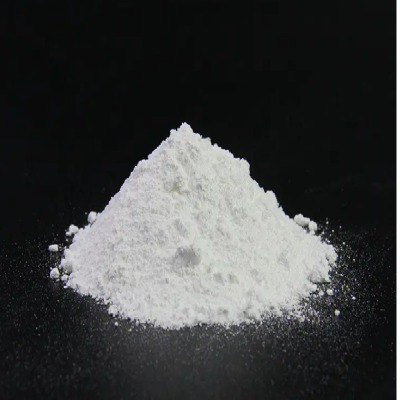The distribution model of pharmaceutical intermediate suppliers has the following characteristics:
Diversified sales channels
- Combination of direct sales and dealership:Many pharmaceutical intermediate suppliers employ both direct sales and dealer sales. For large-scale production enterprises, especially those with long-term stable cooperative relationships with suppliers, direct sales models are adopted, with sales contracts signed directly to ensure stable and timely supply. However, for small and medium-sized enterprises or markets with a wide coverage area, the power of dealers is leveraged for distribution.
- Synergy of online and offline channels:In addition to traditional offline sales channels, some suppliers are also expanding into online channels, selling through e-commerce platforms to broaden the product's sales scope and market coverage.
Customized services for customers
- Accurate market positioning and customer analysis:Identify the target customer groups, including pharmaceutical companies, large-scale medical research institutions, and some small and medium-sized pharmaceutical enterprises. Conduct market research to understand the needs and pain points of these customers and formulate differentiated marketing strategies. For example, for R & D customers, emphasize the high purity and stability of the intermediate products; for large-scale production customers, highlight production efficiency and supply security.
- Customized R & D and production:Some suppliers will conduct customized R & D and production according to the specific needs of customers. Through communication with customers, trade shows and other ways to contact potential customers, after mutual investigation and determination of business relations, conduct research and analysis on the proposed customized products, pilot research, pilot production, and then calculate the cost and quote. After signing the contract, organize production.
Strict channel management
- Dealer screening and management:Suppliers will screen dealers with qualifications based on factors such as distribution capabilities, market familiarity, financial strength, credit records, and operational scale, and manage them uniformly. By establishing strategic cooperative relationships with major dealers or large pharmaceutical companies, the stable supply and circulation of intermediate products are ensured.
- Price control and market maintenance:In order to ensure market stability and their own profit margins, suppliers will control the prices of dealers to prevent malicious competition and price chaos among dealers. At the same time, the market will also be maintained to ensure product quality and brand image.
Professional technical support and services
- Technical support:Since the production of pharmaceutical intermediate suppliers involves complex chemical processes and quality control, suppliers usually equip professional technical teams to provide technical support and after-sales services for customers. For example, help customers solve technical problems encountered during use, provide product instructions and quality assurance, etc.
- Quality assurance:The quality of pharmaceutical intermediate suppliers directly affects the quality and safety of drugs. Therefore, suppliers will establish a strict quality control system to ensure that products meet relevant quality standards and regulatory requirements.
Data-driven decision support
- Data analysis and reporting:Utilize CRM and other systems to analyze and report on sales data and customer information, helping suppliers better understand market demand, customer preferences, and sales trends. Thus, more accurate sales strategies and market promotion plans can be formulated to improve sales efficiency and market competitiveness.
- Customer relationship management:Through CRM systems, manage customers throughout their entire lifecycle, tracking and managing every link from potential customer development, customer conversion, customer maintenance to customer churn early warning. This helps suppliers better meet customer needs and improve customer satisfaction and loyalty.
- FAVORITOS
- Feed de notícias
- EXPLORAR
- Páginas
- Grupos
- Eventos
- Blogs
- Marketplace
- Funding
- Offers
- Jobs
- Developers
The distribution model of pharmaceutical intermediate suppliers
Postado 2025-06-24 01:42:05
0
454

Record
Recording 00:00
Os comentários foram desativados para esta publicação.
Categorias
- Art
- Causes
- Crafts
- Dance
- Drinks
- Film
- Fitness
- Food
- Jogos
- Gardening
- Health
- Início
- Literature
- Music
- Networking
- Outro
- Party
- Religion
- Shopping
- Sports
- Theater
- Wellness
Leia mais
Acheter des Crédits FIFA 25 sur Xbox Series X, PS4 et Xbox One : Guide Complet pour Maximiser Votre Équipe !
Acheter des Crédits FIFA 25 sur Xbox Series X, PS4 et Xbox One
Le jeu FIFA 25 continue...
FC 25 Crediti: Scopri Come Massimizzare i Tuoi Crediti FC per Ottenere Vantaggi Competitivi
FC 25 Crediti: Scopri Come Massimizzare i Tuoi Crediti FC per Ottenere Vantaggi Competitivi
Nel...
Rotomolding Products Market Insights and Forecast Projections 2030
"Comprehensive Outlook on Executive Summary Rotomolding Products Market Size and Share...
Acquista Crediti FC25 al Miglior Prezzo: Guida ai Crediti FIFA 25 per la Tua Squadra
Acquista Crediti FC25 al Miglior Prezzo: Guida ai Crediti FIFA 25 per la Tua Squadra
Se sei un...
Ultimate Guide to POE 2 Currency Exchange and Item Purchases
Ultimate Guide to POE 2 Currency Exchange and Item Purchases
Embarking on your adventure in POE 2...
© 2026 Humans and Slaves  Portuguese (Brazil)
Portuguese (Brazil)
